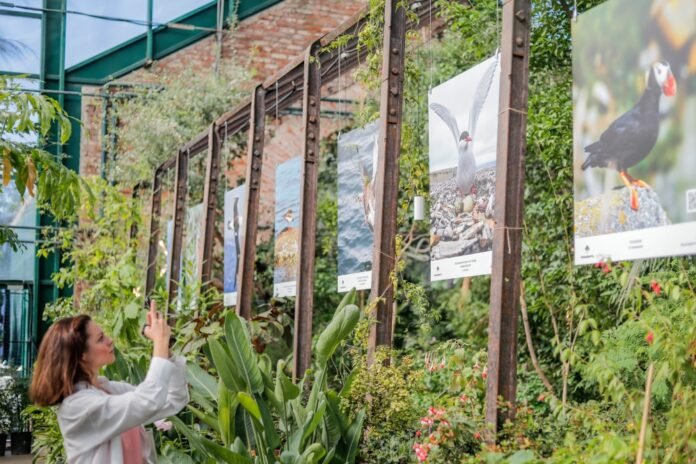The appearance of the atlases is one of the results of the work of the oil company in the study of key species, bioindicators of the sustainability of Arctic ecosystems. In 2019, Rosneft signed an agreement with the Ministry of Natural Resources and committed to implement a corporate program for the study, conservation and monitoring of key species, bioindicators of the sustainability of Arctic ecosystems: the polar bear, the Atlantic subspecies of the walrus , the wild reindeer and the ivory gull. These species are at the top of their food chains, and the status of their populations can be used to judge the state of Arctic ecosystems as a whole.
Over the past ten years, with the support of Rosneft, unprecedented hydrometeorological, geological and biological surveys of the Arctic region in terms of geographical scope have been organized, including the deployment of a vast observation network of automatic weather stations and seismic stations. , the northernmost stratigraphic borehole. There is also no less important work to incorporate the information the company receives during its own expeditions into the body of knowledge already accumulated by scientists. This objective is met by working on atlases. The company produces atlases since 2016.
True experts worked on the compilation of the atlases, each in his own subject. In parallel with the authors, cartographers, artists worked, photographs were selected. “The result is a modern overview of relevant knowledge, which can be used both to broaden one’s horizons and to write articles,” said Artem Isachenko, head of the department of innovative projects at the Rosneft Arctic Science Center shelf. It may be of interest to everyone, but most will be useful to students, graduate students, young scientists.
Atlas “Marine Mammals of Russia” has already been published. Contains data on 47 animal species. This is a group of pinnipeds: a walrus and a seal, as well as several types of whales, a dolphin and a polar bear that lives both on land and in the sea.
“An important point is that the atlas has a separate chapter on which Rosneft expeditions were carried out and what was done on these expeditions, including a description of the methods. After all, if someone else also wants to investigate, the data must be comparable. “. “, – told” RG “a researcher at the Institute of Ecology and Evolution named after AN Severtsov RAS Svetlana Artemyeva. “It is also important that environmental atlases are written in a language accessible to any interested person”.
Photo: NK “Rosneft”
According to the specialist, an important difference between the expeditions organized by the oil company is the ability to carry out comprehensive studies. This is the use of different methods, new technologies, as well as the ability to perform cameral data processing. “Another side of the complexity is the publications that the company supports. We recently published a paper showing how the microbiome of polar bears living in wilderness and in close proximity to humans differs,” the scientist said.
The Atlas “Seabirds of the Russian Arctic” will be available for download on the “Rosneft” website after the release of the printed version of the publication. The atlas contains a description of 62 species of birds living in Russia, as well as several species that have come down to us for some time.
“We have populations of birds of global importance, mainly the white gull, which is listed in the Russian Red Book and the International Red Book. And the vast majority of its world population nests in Russia,” said a leading Arctic and Antarctic researcher. . Maria Gavrilo Research Institute.
According to her, the atlas includes information on birds, to a certain extent related to the marine ecosystem. The species most vulnerable to negative anthropogenic factors were also selected. At the beginning of each essay is a description of the species, then information on its ecology, which also reflects modern threats and conservation measures. All this is complemented by colorful artistic illustrations. “Almost 99 percent of the photos were taken in the places we are talking about, in the Russian Arctic. We gave preference to the photos of the authors of the essays on birds,” said Maria Gavrilo.
The presentation of ecological atlases took place on the territory of the Botanical Garden of the Moscow State University “Pharmaceutical Garden”. The photographic exhibition “Flying over ice” will also be open there for a month. It features photographs of rare birds taken by members of the Rosneft scientific expeditions. There you can also get additional information about the birds by pointing your smartphone at the QR code.
“The best photographs have been selected that will inform our visitors that there is such a project for the study of Arctic animal and bird species,” said Vladimir Chub, director of the scientific and educational center of the State University Botanical Garden. from Moscow. “These photographs are made with taste and decorate our greenhouse. The nature of the Arctic conquers with its severity, and when it successfully “hits” the lens, it is a true photographic masterpiece.
This is not the first joint project with Aptekarsky Ogorod. With the support of Rosneft, in 2022, one of the largest in Russia, the Moss Garden, was opened in the botanical garden. The unique exhibit features more than 40 species of midzone mosses, including rare and endangered species.

